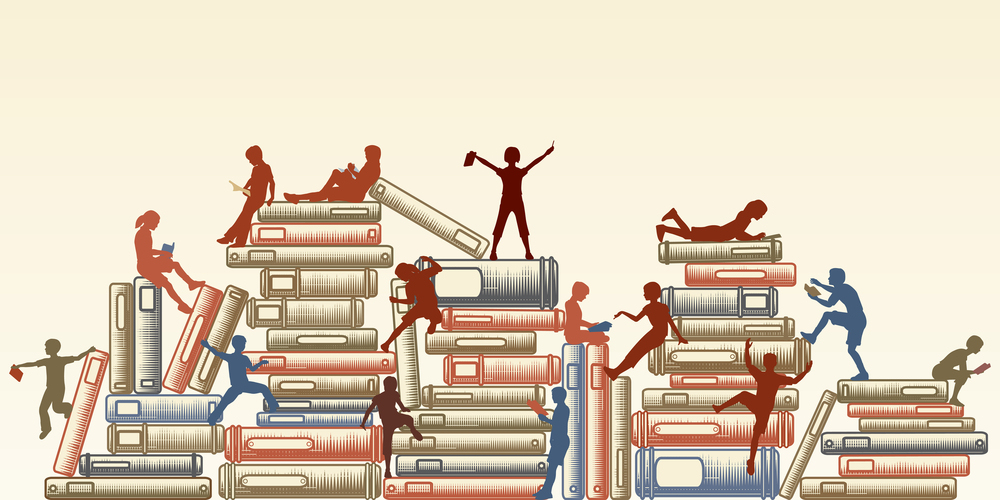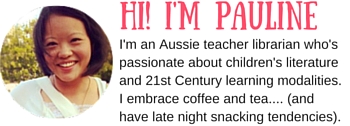Book raps
Structure and operation
Book raps are a form of dialogic teaching in a blended learning environment – online book clubs. The rap co-ordinator promotes discussion through weekly online questions (rap points). The classroom teacher encourages face-to-face discussion of the rap points before individual or jointly-constructed responses are made online. Both the rap coordinator and the classroom teacher harness dialogic opportunities to extend learning. The power of talk scaffolds students to articulate emotional responses to texts; make moral/ethical evaluations of main characters; and evaluate aesthetic qualities of literary texts studied (Simpson, 2010).
To support student learning of the History Stage 2 First Contacts content, a What’s your story? (Gianone & Emmerichs 2013) book rap exploring the early colonisation of Australia with a key literary learning focus on aesthetic reader response, encourages students to give voice to their own personal responses to the text, and test these against the text and against the responses of others. Learning that no two readers create identical stories from the same text moves students away from the teacher as source of the ‘true’ meaning of a text (Stephens, Parker, & Watson, 2003); a valuable insight for students as they learn to critically read and think deeply through historical content and concepts presented.
Key weekly book rap components include:
- Coordinator sets up forum via Edmodo, and teachers only subgroup (a place to support, collaborate and share implementation ideas). Teachers and students join.
- Introductions.
- Respond to rap point 1: visual cues. Ideas about living in this time, environment or similar aspects to emphasise a personal connection to the book, using the books’ pictures only. Respond to other posts.
- Respond to rap point 2: printed text. Focusing on visual literacy, does reading the text change interpretations of pictures? What is the story about? Respond to other posts.
- Respond to rap point 3: view points. Re-read story from viewpoint of one particular character. Impressions of story based on a particular viewpoint. Compare impressions. Respond to other posts.
- Wrap up reflective response – connected literary learning rubric and learning reflections.
Delivery
The teacher librarian (TL) will collaborate with teachers to promote discussion opportunities by hosting the book rap, providing book rap support materials, maintaining an active online presence, etc. The TL will collaborate with other TLs to create an interschool book rap. Extending real peer audience is highly motivational for students (Lloyd, 2007). To further maximise blended learning, rap points will be designed by the TL using the dialogic teaching principles (Simpson, 2010) of collectively (address learning tasks together), reciprocity (listening and sharing ideas), cumulation (building on own and each others ideas), support (free articulation of ideas) and purposefulness (dialogue planned with specific outcomes).
Learning outcomes and assessment evidence
Students’ literary development and their understanding of the early colonisation of Australia will be assessed through:
- Rubric about connected literary learning – self-completed and shared online:
- Critical thinking (insights and ability to share thoughts);
- Creative thinking (original ideas and authentic seamless use of media);
- Quality of forum entries (personalised deep engagement with text);
- Community of practice (participation, connectedness, community building).
- Learning reflection post sharing what they have learnt about:
- Why Europeans settle in Australia
- The nature of contact between the First Australians and the Europeans
- Skills they have developed in critical thinking, creative thinking, reading texts, and sharing thoughts, understandings and excitement about a book with others.
Teachers will assess reflective responses noting: use of media; development as critical readers; and depth of personal understanding of the historical concepts drawn from the story (i.e. continuity and change, cause and effect, perspectives and empathetic understanding).
Ethical and legal implications of technology and media usage
A book rap literature response strategy uses Web 2.0 technology to increase student learning through digital media’s co-creative nature and social networking capabilities. As teachers and students engage in conversations and interactions using digital media, they will need to adhere to the NSW Department of Education’s social media policies. When creating projects, students and teachers should use creative commons resources for music, film clips and photographs and note and apply attributions requirements. The Smartcopying website will also be referenced throughout creative projects to ensure proper attributions, intellectual property and copyright permissions are adhered to. Security settings on wikis and book rap forums will be set to the highest privacy levels to ensure only literary learning group members can see and edit content.
Book raps bibliography
Unsworth, L.; Thomas, A; & Simpson, A. M. (2005). Children’s Literature and Computer Based Teaching. Retrieved from EBook Library.
References
Giannone, R., & Emmerichs, B. (Illustrator). (2013). What’s your story? Kew East, Victoria: Berbay.
Lloyd, M. (2007). Book raps: Talking about reading. Practically Primary, 12(3), 18-20. Retrieved from http://search.informit.org/
Simpson, A. (2010). Dialogic teaching in an online environment: Book raps. English Teaching: Practice & Critique, 9(2), 32-46.
Stephens, J.; Parker, J.; & Watson, K. (2003). From picture book to literary theory (2nd ed.). Rozelle, NSW: St Clair Press.


